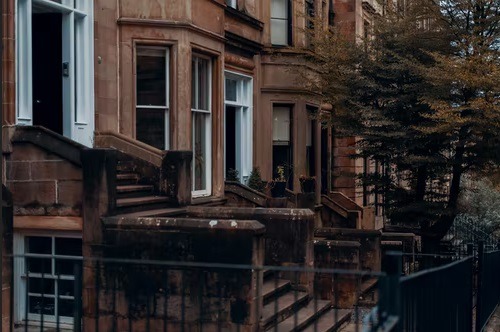A historic tenement that housed 7,000 people from more than 20 different countries between 1863 and 1935 serves as the museum’s focal point. The tenement’s tiny quarters, previous tenants’ stories, and the Lower East Side’s history all play a part in how accurately it captures the immigrant experience. Making a new life, striving for a better future, and establishing a family on a limited budget were hurdles they had to overcome.
The Tenement Museum has re-envisioned the function that museums can have in our lives by recognizing the significance of this ostensibly unremarkable structure. Programs including historic building tours, neighborhood walking tours, virtual events, and more are provided all year round.
Tenement Museum’s Mission
The Tenement Museum fosters emotional ties between visitors and immigrants past and present, heightens appreciation for the significant role immigration has played and continues to play in forming America’s evolving national identity, and preserves and interprets the history of immigration through the personal experiences of the generations of immigrants who settled in and built lives on Manhattan’s Lower East Side, America’s iconic immigrant neighborhood.
Stabilization and restoration work at the Tenement Museum was sponsored in 2000 by a project via the Save America’s Treasures Grant Program, which aids in the preservation of nationally significant historic structures and collections.
History of Tenement Museum
Aside from the typical museums found in New York, the Tenement Museum is housed in eleven old tenement buildings that were built in the 1800s and are situated on the northern edge of the Old Town Market Square. 1300. In the middle of the 15th century, the area’s first gothic structures were constructed. The tenement homes on the plaza underwent additional renovation after the fire of 1607, which is how they currently appear. Here once lived representatives of the wealthiest families, city council members, voits, and mayors of Old Warsaw. As Warsaw’s administrative, cultural, and economic centers expanded outside the Old Town walls in the 19th century, the neighborhood rapidly deteriorated.
The Society for the Preservation of Historic Monuments, which has possessed the Baryczka tenement house since 1911, is responsible for the inception of the display and conservation work in the Old Town. The northern half of the Old Town Market Square was renamed the Dekert Side in 1916 on the anniversary of the Constitution of 3 May (1791), in honor of Jan Dekert (1738-1790), a Warsaw mayor and advocate for the rights of the populace.
The Baryczka home, the Kleinpold house next door (number 34), and the so-called “Under the Negro” house (number 36) were all purchased by the city in the years 1937 and 1938 for the Museum of Old Warsaw, a new division of the National Museum. The tenement houses along the Dekert Side, destroyed during the Warsaw Uprising, were rebuilt in the years 1947-1953 to house the municipal museum, but the project to turn the homes into a museum was put on hold when World War II broke out. In these homes, the first permanent exhibition debuted in 1955.
Learning about the occasions and individuals connected with Warsaw’s Old Town begins with the tale of how the northern side of the Old Town Market Square was transformed, as well as specific architectural features of the buildings. Visitors can also visit the American museum of natural history.
Exhibits, Collections, and Programs at Tenement Museum
The museum features reconstructed historical rooms, businesses, and apartments that are open daily for public tours. These displays and events give visitors a glimpse into the life of immigrants who resided at 97 Orchard Street between 1869 and 1935 and at 103 Orchard Street from the 1950s to the 1980s. The museum also offers a documentary movie, excursions with interpreters dressed as the building’s historical occupants, tastes of the local cuisine, and strolls in the area. The museum’s guided tours situate the experiences of the immigrants within the larger framework of American history. The museum offers a range of educational programs in addition to housing a sizable collection of historical archives.
In December 2017, the “Under One Roof” exhibition debuted. The exhibition, which is located at 103 Orchard Street, above the Visitor’s Center, examines the experiences of a Chinese immigrant family, a Puerto Rican immigrant family, and a Holocaust refugee family.
To inform visitors about Black experiences in the Lower East Side, the Tenement Museum introduced “Reclaiming Black Spaces” to their range of accessible walking and virtual tours in the spring of 2021. This was motivated by the finding of two males called Joseph Moore in the museum’s collection. They both lived in NYC, were roughly the same age, and shared the same line of work. The major difference between them was that one was a white Irishman who lived at 97 Orchard Street where the museum stood, and the other was a Black man who resided in a nearby tenement building. The Irishman Joseph Moore’s kitchen has been reproduced in the museum, and in 2022 they hope to open an apartment that will serve as the family’s actual home. This will be the museum’s first-ever apartment display dedicated to the Black experience.
The Act for Tenement Houses
Tenement House Acts were frequently passed during the 1800s and 1900s. However, three specific Acts significantly impacted how people live in today’s housing. The three Tenement House Acts in question are the Tenement House Acts of 1867, 1879, and 1901, which are all a part of the New York State Tenement House Act.
The Tenement House Act of 1867, sometimes referred to as “the Old Law,” was the first tenement house law. It was the first comprehensive housing reform bill in the nation. The rule mandated that buildings include at least one toilet for every 20 occupants, fire escapes, and, if practical, connections to the city wastewater system. The law had minimal impact because many people (tenement owners) disobeyed it. The Tenement House Act of 1879, commonly referred to as “the Old Statute,” followed the 1867 law and was the second Tenement House Act. Buildings with inner rooms without windows, like 97 Orchard Street, were prohibited in several neighborhoods. For the renter to evacuate the building in an emergency, the 1879 ordinance mandated that all rooms be open onto the street, the back yard, or an air shaft. Owners created the “dumbbell” tenement plan as a result. The third Tenement House Act, often known as “The New Law,” was passed after the government realized that many of the tenement structures were exceedingly hazardous and unlivable. Buildings must have running water, gas, light, and ventilation under the 1901 law. A ban was placed on the dumb-bell tenement plan. The bill empowered the Tenement House Department to investigate these structures and implement the new restrictions because the previous Tenement House Act had not improved housing conditions.


